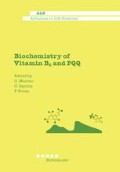Summary
The gene of a Gram-positive Coryneform bacterium Arthrobacter globiformis encoding a copper-containing quinoprotein, phenylethylamine oxidase, has been cloned and sequenced. In the deduced amino acid sequence comprising 638 residues was found a tetrapeptide sequence, Asn-Tyr-Asp-Tyr, which is highly conserved in this class of enzymes. The former Tyr (Tyr-382) in the consensus sequence is supposed to be the precursor to the covalentlybound 2,4,5-trihydroxyphenylalanine (topa) quinone cofactor. To elucidate the mechanism of the quinone cofactor formation, an expression plasmid has been constructed for the cloned phenylethylamine oxidase gene, and the recombinant enzyme was overproduced in a Cu2+-depleted medium. The Cu2+-deficient inactive enzyme purified to homogeneity was dramatically activated upon incubation with Cu2+ under aerobic conditions, concomitantly with the formation of the topa quinone at the position corresponding to Tyr-382. The topa quinone formation was accelerated by hydrogen peroxide and retarded by catalase, but required no external enzymatic systems. The purified mutant enzyme, in which the precursor Tyr-382 to the topa quinone is replaced by Phe, had neither activity nor the topa quinone cofactor even after reconstitution with Cu2+. These results demonstrate the Cu2+-dependent autooxidation of a specific tyrosyl residue into the topa quinone cofactor. A possible mechanism of the topa quinone formation is discussed here, which represents a novel type of posttranslational modification of proteins to generate a covalently bound catalytic group.
Access this chapter
Tax calculation will be finalised at checkout
Purchases are for personal use only
Preview
Unable to display preview. Download preview PDF.
References
Brown, D.E., McGuirl, M.A., Dooley, D.M., Janes, S.M., Mu, D., and Klinman, J.P. (1991) The organic functional group in copper-containing amine oxidases. Resonance Raman spectra are consistent with the presence of topa quinone (6-hydroxydopa quinone) in the active site. J. Biol. Chem. 266: 4049–4051.
Cooper, R.A., Knowles, P.F., Brown, D.E., McGuirl, M.A., and Dooley, D.M. (1992) Evidence for copper and 3,4,6trihydroxyphenylalanine quinone cofactors in an amine oxidase from the Gram-negative bacterium Escherichia coli K-12. Biochem. J. 288: 337–340.
Janes, S.M. and Klinman, J.P. (1991) An investigation of bovine serum amine oxidase active site stoichiometry: Evidence for an aminotransferase mechanism involving two carbonyl cofactors per enzyme dimer. Biochemistry 30: 4599–4605.
Janes, S.M., Mu, D., Wemmer, D., Smith, A.J., Kaur, S., Maltby, D., Burlingame, A.L., and Klinman, J.P. (1990) A new redox cofactor in eukaryotic enzymes: 6-Hydroxydopa at the active site of bovine serum amine oxidase. Science 248: 981–987.
Janes, S.M., Palcic, M.M., Scaman, C.H., Smith, A.J., Brown, D.E., Dooley, D.M., Mure, M., and Klinman, J.P. (1992) Identification of topaquinone and its consensus sequence in copper amine oxidases. Biochemistry 31: 12147–12154.
McCracken, Peisach, J., and Dooley, D.M. (1987) Cu(II) coordination chemistry of amine oxidases: Pulsed EPR studies of histidine imidazole, water, and exogenous ligand coordination. J. Am. Chem. Soc. 109: 4064–4072.
Mu, D., Janes, S.M., Smith, A.J., Brown, D.E., Dooley, D.M., and Klinman, J.P. (1992) Tyrosine codon corresponds to topa quinone at the active site of copper amine oxidases. J. Biol. Chem. 267: 7979–7982.
Mu, D., Medzihradszky, K.F., Adams, G.W., Mayer, P., Hines, W.M., Burlingame, Al., Smith, A.J., Cai, D., and Klinman, J.P. (1994) Primary structures for a mammalian cellular and serum copper amine oxidase. J. Biol. Chem. 269: 9926–9932.
Mure, M. and Klinman, J.P. (1993) Synthesis and spectroscopic characterization of model compounds for the active site cofactor in copper amine oxidases. J. Am. Chem. Soc. 115: 7117–7127.
Novotny, W.F., Chassande, O., Baker, M., Lazdunski, M., and Barbry, P. (1994) Diamine oxidase is the amiloridebinding protein and is inhibited by amiloride analogues. J. Biol. Chem. 269: 9921–9925.
Tanizawa, K., Matsuzaki, R., Shimizu, E., Yorifuji, T., and Fukui, T. (1994) Cloning and sequencing of phenylethylamine oxidase from Arthrobacter globiformis and implication of Tyr-382 as the precursor to its covalently bound quinone cofactor. Biochem. Biophys. Res. Commun. 199: 1096–1102.
Zhang, X., Fuller, J.H., and McIntire, W.S. (1993) Cloning, sequencing, expression, and regulation of the structural gene for the copper/topa quinone-containing methylamine oxidase from Arthrobacter strain Pl, a Gram-positive facultative methylotroph. J. BacterioL 175: 5617–5627.
Author information
Authors and Affiliations
Editor information
Editors and Affiliations
Rights and permissions
Copyright information
© 1994 Birkhäuser Verlag Basel/Switzerland
About this paper
Cite this paper
Tanizawa, K., Matsuzaki, R., Fukui, T. (1994). Copper ion-dependent biogenesis of topa quinone cofactor covalently bound to bacterial monoamine oxidase. In: Marino, G., Sannia, G., Bossa, F. (eds) Biochemistry of Vitamin B6 and PQQ. Advances in Life Sciences. Birkhäuser Basel. https://doi.org/10.1007/978-3-0348-7393-2_43
Download citation
DOI: https://doi.org/10.1007/978-3-0348-7393-2_43
Publisher Name: Birkhäuser Basel
Print ISBN: 978-3-0348-7395-6
Online ISBN: 978-3-0348-7393-2
eBook Packages: Springer Book Archive

